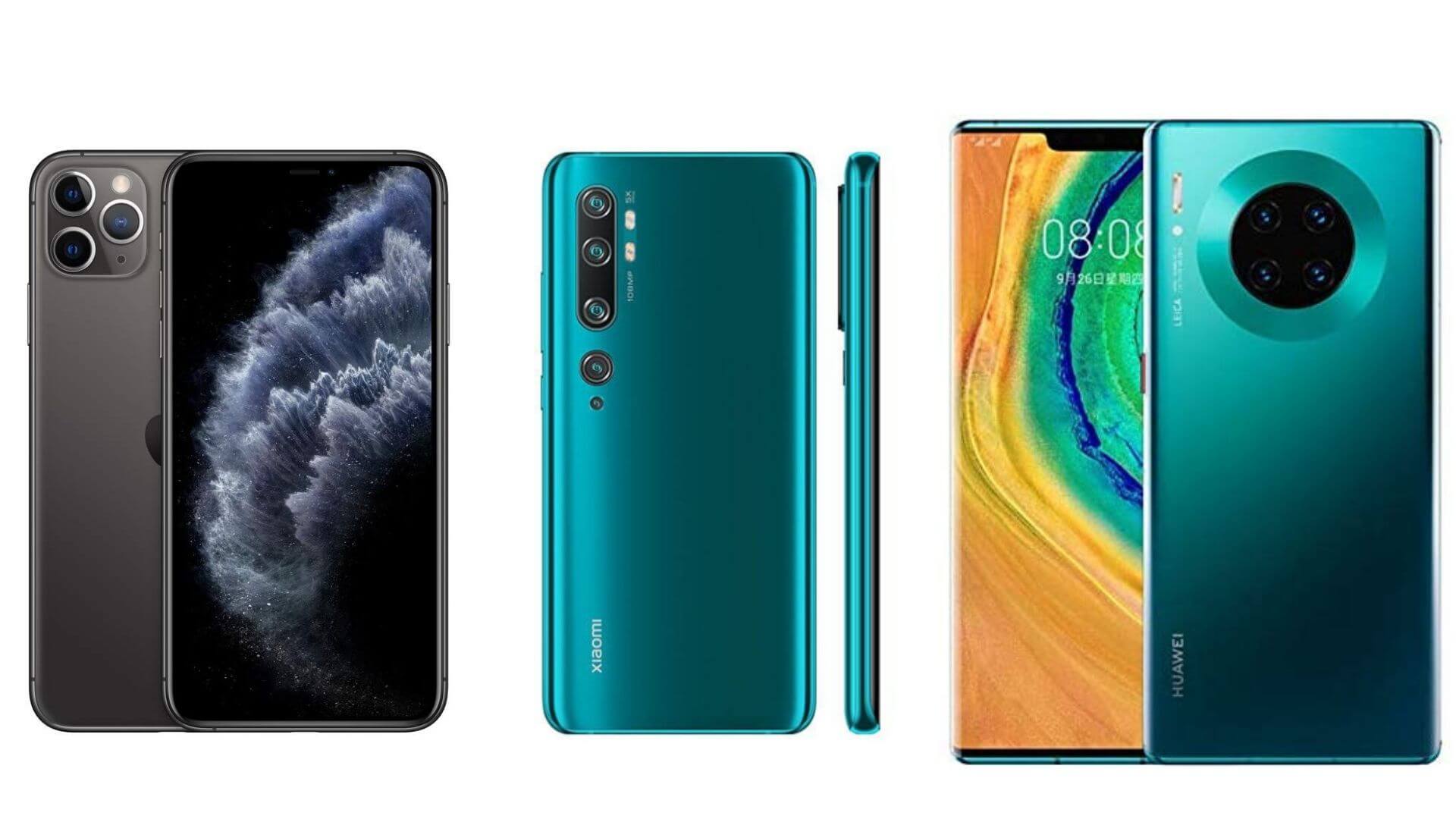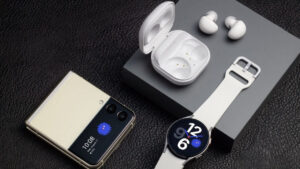What is DXOMARK?
DXOMARK is an independent organization that scientifically assesses smartphones, lenses, and cameras. Established in the year 2008, DXOMARK test the image quality of lenses and cameras and image as well as audio quality of smartphones.
They follow a scientific approach for testing products and a comprehensive testing criteria that includes many use cases. Hundreds of tests are conducted which are examined by highly qualified Engineers and expert technicians.
Hundreds of individual tests for each device are conducted and the results are combined into one score called the DXOMARK SCORE. The higher the score, the better is the product.
On November 7, 2019, DXOMARK tested the camera of iPhone 11 Pro Max and ranked it at number 2 in the Photo and number 1 in the Video.
iPhone 11 Pro Max’s camera achieved a net score of 117 points, with a Photo score of 124 and Video score of 102 points.
iPhone 11 Pro Max and Xiaomi CC9 Pro share the top spot for the video quality and Huawei Mate 30 Pro remains on the top in photo quality.
Huawei Mate 30 Pro and Xiaomi CC9 Pro Premium Edition are ranked at no. 1 with a DXOMARK SCORE of 121.
Here is the camera specifications of the three smartphones.
| iPhone 11 Pro Max
PRICE: Starts at INR 1,09,900 |
Xiaomi CC9 Pro
PRICE: Starts at INR 28,000 |
Huawei Mate 30 Pro
PRICE: Expected at INR 86,590 |
| TRIPLE CAMERA SETUP | PENTA CAMERA SETUP | QUAD CAMERA, with ToF sensor |
| Primary: 12 MP , 1/2.55” sensor, 26mm-equivalent f/1.8-aperture lens, PDAF,OIS | Primary: 108 MP , 1/1.33 sensor, 25 mm-equivalent, f/1.69-aperture lens, OIS | Primary: 40Mp 1/1.7″ sensor, 27mm-equivalent f/1.6-aperture lens, PDAF, OIS
|
|
Ultra-wide: 12 MP sensor, 13mm-equivalent f/2.4-aperture lens |
Ultra-wide: 20.11MP 1/2.8-inch sensor with 16mm-equivalent, f/2.2-aperture lens
|
Ultra-wide: 40Mp 1/1.54″ sensor, 18mm-equivalent f/1.8-aperture lens, PDAF |
| Telephoto: 12 MP 1/3.4” sensor, 52mm-equivalent f/2.0-aperture lens, PDAF, OIS | Short telephoto: 12.19MP 1/2.6-inch sensor with 50mm-equivalent, f/2-aperture lens
Long telephoto: 7.99MP 1/4.4-inch sensor with 94mm-equivalent, f/2-aperture lens, OIS. Macro: f/2.4 lens designed for close focus from 2 to 10cm |
Telephoto: 8Mp 1/4″ sensor, 80mm-equivalent f/2.4-aperture lens, PDAF, OIS
ToF 3D depth-sensing camera
|
| Quad-LED dual-tone flash | DUAL flashes-one with soft light and one with hard light | DUAL LED Flash
|
| 4K Video, 2160/60fps (1080/30 fps default) | 1920X1080 @ 30fps | 4K Video, 2160/60fps ( 2160/30 fps default)
|
The smartphones are given a Photo score and the Video score. Let us know what factors are considered in both of them.
PHOTO
The factors that are taken into consideration in deciding the Photo quality of a smartphone’s camera are:
| Factors | iPhone 11 Pro Max | Xiaomi CC9 Pro | Huawei Mate 30 Pro |
| Exposure | 96 | 94 | 96 |
| Color | 87 | 88 | 88 |
| Autofocus | 99 | 99 | 100 |
| Texture | 77 | 84 | 83 |
| Noise | 73 | 80 | 81 |
| Artifacts | 82 | 69 | 84 |
| Night | 53 | 56 | 61 |
| Zoom | 74 | 109 | 91 |
| Bokeh | 65 | 70 | 70 |
| Wide | 40 | 39 | 34 |
iPhone 11 Pro Max: Photo Score 124
iPhone 11 Pro Max has a Photo score of 124 points, which makes it among the top 5 smartphones in DXOMARK’s ranking. The smartphone is great in clicking pictures, shows a good exposure and dynamic range in both bright light as well as indoor conditions. One of the best features in this smartphone is Apple’s deep Fusion that uses Machine Learning image stacking that helps in better details and textures.
It’s been said that Apple has made a lot of improvement in terms of color quality and the zoom.
Although iPhone 11 Pro Max has been ranked at a second position in terms of photo quality, it’s been tested and said by the users that the Selfies taken in 11 Pro are far better and more realistic than the smartphones ranked at number 1.
CONS
After testing, it’s been reviewed that iPhone 11 Pro Max struggles in the low light. It is not able to keep with the larger image sensors, such as Huawei Mate 30 Pro. The noise level and the lack of details in low-light captured pictures are disappointing.
Xiaomi CC9 Pro: Photo Score 130
Xiaomi CC9 Pro gave excellent results in DXOMARK tests in every type of photo situation and is given a Photo score of 124 points. It gives accurate exposures with excellent detail preservation and well-managed noise. The amazing rendering of background blur and the Bokeh effect helps you in shooting perfect portraits.
It does exceptionally well in the zoom, with the help of its dual telephoto lens equipped cameras. The night shots feature very natural skin tone due to its softer flash and the job of Autofocus is very impressive. It does a great job of rendering fine detail, in both outdoor and indoor conditions, and thus became top scorer in texture.
CONS
It’s been reviewed by the experts that colors in outdoor scenes can be under-saturated and it has a limited dynamic range as compared to the other top performers.
Huawei Mate 30 Pro: Photo Score 132
Huawei Mate 30 Pro gets an all-time highest Photo score of 132 points.
This smartphone deploys a new AI-RAW algorithm that uses Artificial Intelligence to optimize demosaicing from the Quad-Bayer sensor pattern to RGB image output and noise reduction is done at a RAW level. It achieves excellent results in almost all categories and shines for textures and noise. Mate 30 Pro has a fast, accurate, and repeatable Auto-Focus which adds to the camera quality.
Mate 30 Pro captures amazingly in the low-light, it has good exposures down to very low light level and noise level are low as well. The accurate depth estimations in Bokeh mode helps in capturing wonderful portraits.
CONS
Color saturation is high, even in the low light and this sometimes result in unnatural results and some light casts are also visible in low light.
Apart from this, Huawei Mate 30 Pro does not show any real weakness in the camera and is considered to be the top performer in the Photo department.
VIDEO
The factors that are taken into consideration in deciding the Photo quality of a smartphone’s camera are:
| Factor | iPhone 11 Pro Max | Xiaomi CC9 Pro | Huawei Mate 30 Pro |
| Exposure | 90 | 87 | 89 |
| Colour | 90 | 91 | 90 |
| Autofocus | 93 | 98 | 93 |
| Texture | 75 | 74 | 75 |
| Noise | 79 | 83 | 77 |
| Artifacts | 85 | 82 | 78 |
| Stabilization | 94 | 94 | 94 |
iPhone 11 Pro Max: Video Score 102
The videos shot on 11 Pro Max show good exposure due to its video HDR and they have a very wide dynamic range which helps to capture great detail in both the highlight and shadow regions of the frame. Its gives you good video color both in bright light and indoors. Artifacts and Ringing are very well controlled.
CONS
When shooting in 4K mode, the camera records a high level of detail for both indoors and outdoors, but it struggles in low light and the details drop off. Noise is also visible when shooting in low light.
Xiaomi CC9 Pro: Video Score 102
Video shooting on Xiaomi CC9 Pro is impressively accurate, even in low light conditions. The camera smoothly adapts to the exposure of changing light conditions. Color rendering and Auto Focus are the features that are mastered by this smartphone. It tracks the moving objects perfectly with the help of its fast and repeatable autofocus.
CONS
Judder is visible while panning and frames are sometimes dropped. While shooting indoors, there can be some variation in the sharpness between the frames and some small portions of the scene do not move correctly relative to another.
Huawei Mate 30 Pro: Video score 100
Mate 30 Pro records video at 4K resolution by default and shows the best balance between texture and noise. Though Mate 20 Pro does not offer HDR recording, but it gives good target exposure in low light and has a wide dynamic range.
CONS
It shows some white balance instabilities while shooting outdoors in bright light and some motion blur is seen in video frames.




